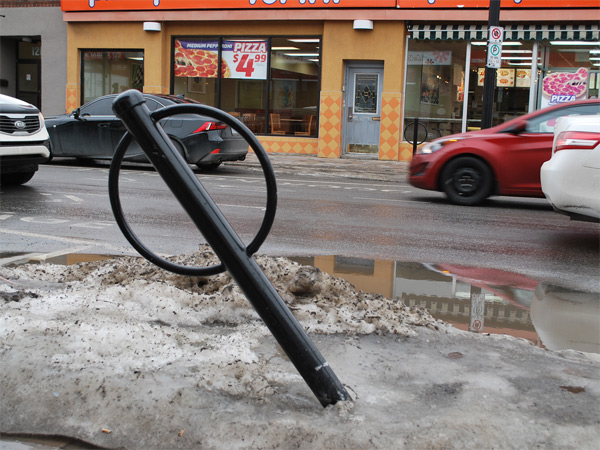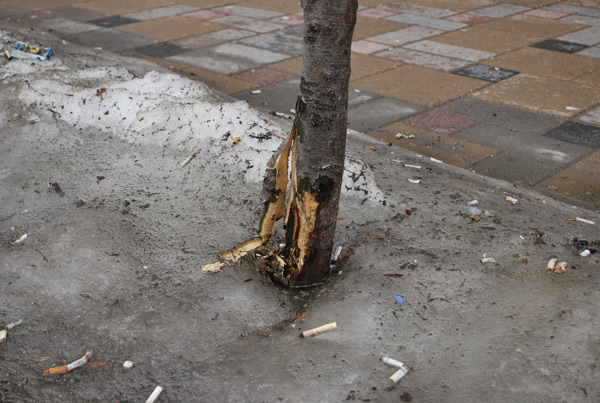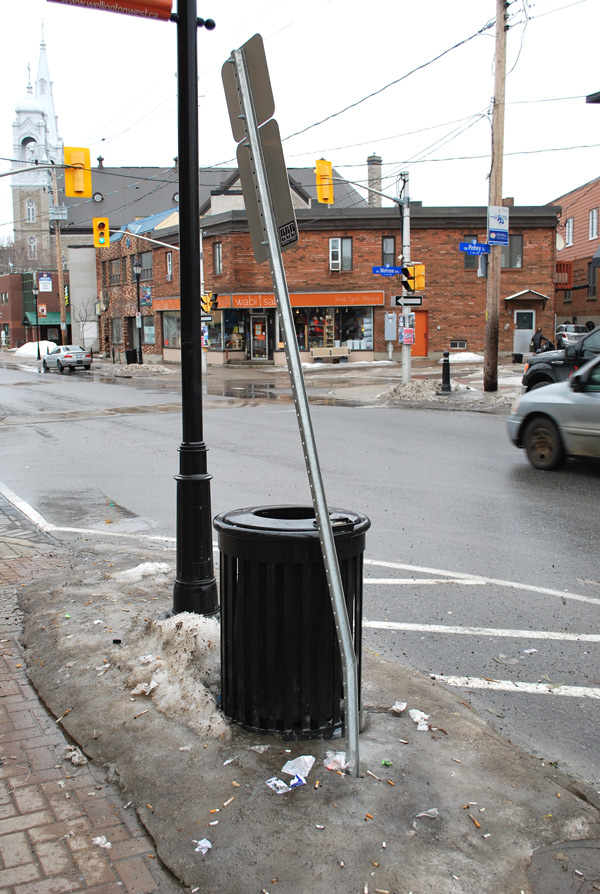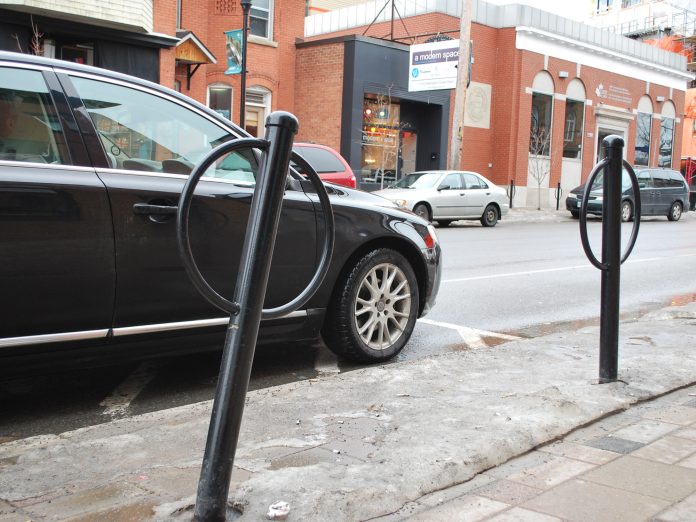By Neil McKinnon –
As the spring melt uncovers winter debris, some people get busy cleaning their yards and assessing what needs to be done. Likewise, when the sidewalk becomes visible, Zachary Dayler, Executive Director of Wellington West Business Improvement Area (WWBIA), gets busy.
Maintaining WWBIA’s 2.4 km stretch from Somerset Bridge all the way to Island Park is no easy task compared to the average yard. Although Zachary does not do the actual manual labour, he does work closely with the City by submitting requests to repair potholes and other damaged items to its bike racks, bollards, signage, benches and planters. Cataloguing and reporting such massive winter damages can be very time consuming. Zachary says this can be frustrating because he sees a lot of damage that could be avoided if snow-clearing staff were more mindful.
“It is disappointing that cataloguing the damage caused from snow clearing is an annual exercise of the WWBIA. More care needs to be taken by the City of Ottawa to ensure the investments the City makes in Ottawa neighbourhoods are maintained,” says Zachary. “These are expensive damages that likely could be avoided with better care and attention to the task.”
Damage is not only caused by snowplows bumping into things. People, cars, snow buildup and general wear and tear are also to blame. However, the origin of some damage is obvious.
“When I see a sheared off bike rack I can assume that it was from a Bobcat,” says Zachary. [story continues below]



Some items can be repaired and others need to be replaced.
Although anyone can call 311 and report damage along the street, the BIA takes all reports from the general public and its membership and files a bulk notification to the City. When damage is significant, Zachary reports it immediately and the City addresses the concern in a timely fashion. Otherwise, he writes down the location of the damage and once the snow melts he takes photos of it. The photos are then included in a detailed report of the damages and submitted to both the Councillor and the City’s surface operations department. The City usually begins repairs in April and wraps up most of its work by end of summer. The City tells the BIA what it cannot repair.
Zachary says he understands how the City is under pressure to properly clear snow from its busy urban streets and how rushing to do so can occasionally cause damage. He also says the City does not tell the BIA of any costs associated to repair and maintain the street.
According to City records, between January 1, 2015 and May 31, 2015 the City received a total of 15 claims in Kitchissippi for damage claimed to have been caused by snowplows or snow removal equipment. All of these were in respect of private property, including vehicles. Of these 15 claims, the City made four payments for a total amount of $5,932.
Zachary notes the BIA does its best to report any deficiencies it sees. In his opinion, he thinks the City could review the frequency of certain items being replaced. For example, because of the cold Canadian climate some items will break easier than others. Even if it costs a bit more, a solution to that problem could be eliminating some items altogether or purchasing items made from stronger, more durable metals.
“If we’re always looking for the best price yet we keep replacing them every year, well, that’s not very cheap,” says Zachary.
Later on this year, Zachary says the BIA is implementing a digital asset map so it can increase its efficiency at reporting damage along its district. The project is dependent upon City funding.
Kitchissippi Councillor Jeff Leiper could not be reached for comment.
